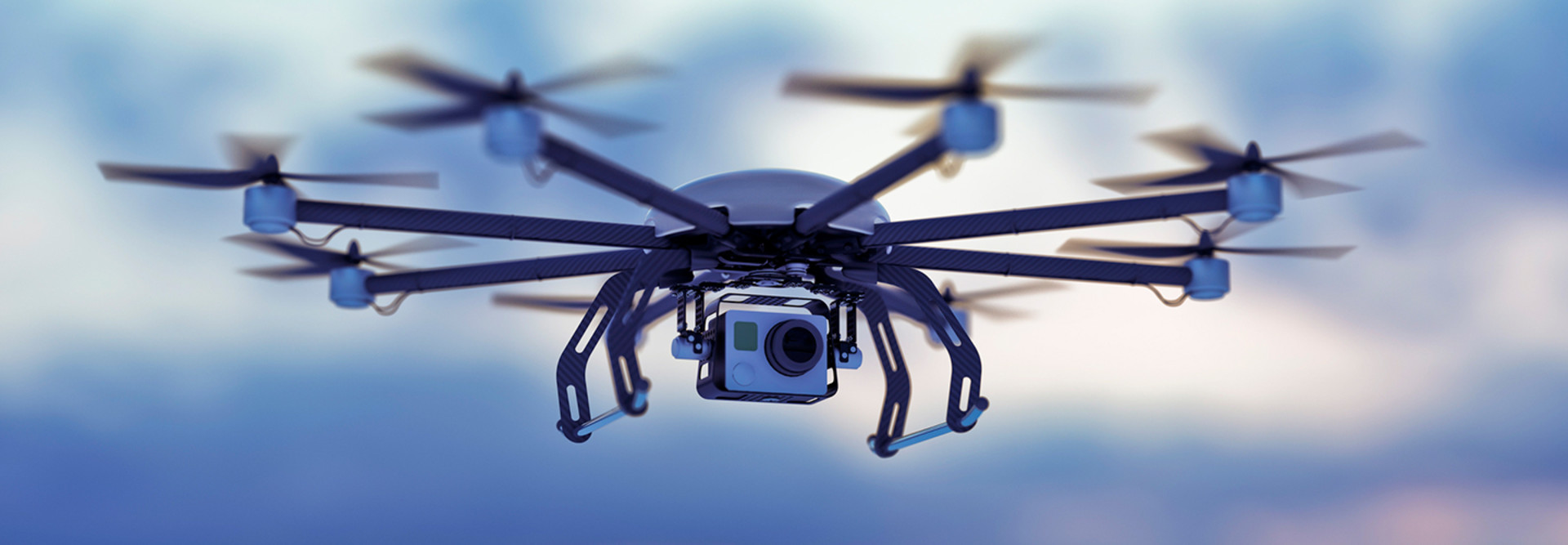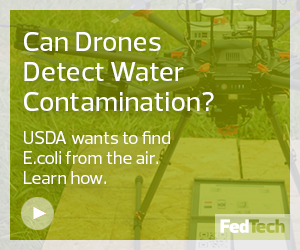USDA Explores Using Drones to Test Irrigation Water for E. coli
The new Food Safety Modernization Act became law in 2011 and required farmers to test for E. coli and other bacteria. However, the law does not give them any direction as to how to do so.
The USDA’s Agricultural Research Service is using drones to try to find an answer. Farmers need to sample their irrigation water and demonstrate that it is safe to put onto crops. It is important to sample the water because bacteria in water can filter into the plant matter and cause illnesses — E. coli cannot always simply be washed off.
The ARS is exploring whether drones can be used to provide aerial coverage of irrigation ponds to find indicators of bacteria like E. coli. The service is trying to find a relationship between the E. coli and the algae and other content in ponds, according to Jaclyn Smith, a biological technician with ARS.
Drones can deliver more accurate and higher-resolution images of ponds than satellites, says Billie Griffith, a biological technician and drone pilot with ARS. Equipped with infrared cameras and cameras that capture different wavelengths of light, drones can detect higher concentrations of bacteria. If drones can be used to detect which areas of ponds have higher concentrations of E. coli, then that will cut down on the amount of sampling that is needed, saving money.
In the ARS’ research, the cameras on the drones deliver a digital number that corresponds to some parameter that could be related to the amount of E. coli in the water. Eventually, a farmer may be able to fly a drone over his fields and ponds and use the information the drone gathers to cut down on more expensive measurements, says Matthew Stocker, a research associate with ARS. The goal, of course, is to make food safer for citizens, and to do so in a way that is not burdensome to farmers.
“Technology helps us to get quality information,” Yakov Pachepsky, an ARS soil scientist says. “It gives us an opportunity to look at the stuff we already know in an absolutely new angle.”
MORE FROM FEDTECH: Discover how agencies store and process all of the data they gather from drones.
Interior, NASA and Other Agencies Launch Drones to Support Missions
Of course, USDA is just one of numerous agencies that have employed drones to help fulfill their missions.
Another is the Interior Department, which sometimes deploys drones with infrared sensors to make heat readings; hyperspectral sensors to detect objects, materials or processes; and other remote sensing instruments, according to Richard Thurau, remote sensing specialist in Interior’s Office of Aviation Services.
When the Kilauea volcano erupted on Hawaii’s Big Island in May, Interior Department scientists thought that drones would help them better watch the lava flow and its impact on the surrounding neighborhoods. The plan worked beyond anything they’d expected; the drones were able to go places unreachable by or unsafe for humans. Drones gave the scientists details on which direction the lava was flowing and how fast it was going, information critical to the first responders who were battling the resulting flames and the residents who needed to know when to evacuate.
Drones also gave Interior high-resolution imagery of the volcano’s summit, whose shape changed with every new eruption and earthquake. They allowed agency scientists to gather data on the harmful gases expelled during the eruption and the potential health impact on residents.
NASA uses drones to support both Earth science missions and the development of aeronautical technology. The space agency has developed technology that may enable large-scale unmanned aircraft to fly safely in the national airspace along with piloted aircraft. The agency is testing technologies that maintain safe spacing between cooperative (responsive) and noncooperative (nonresponsive) unmanned aircraft systems (e.g. drones), beyond visual line-of-sight and over moderately populated areas.
The Department of Homeland Security is testing new kinds of video analysis of footage from drones, with the potential for neural networks to be trained to recognize patterns and detect objects more readily.
And not all drones fly in the air. The National Oceanic and Atmospheric Administration has deployed unmanned ocean vehicles — so-called “saildrones” — to “hard-to-reach places such as the Arctic and the tropical Pacific to help better understand how changes in the ocean affect weather, climate, fisheries and marine mammals.”











